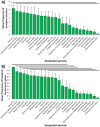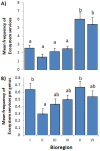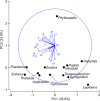Seagrass Ecosystem Services and Their Variability across Genera and Geographical Regions
- PMID: 27732600
- PMCID: PMC5061329
- DOI: 10.1371/journal.pone.0163091
Seagrass Ecosystem Services and Their Variability across Genera and Geographical Regions
Erratum in
-
Correction: Seagrass Ecosystem Services and Their Variability across Genera and Geographical Regions.PLoS One. 2017 Jan 5;12(1):e0169942. doi: 10.1371/journal.pone.0169942. eCollection 2017. PLoS One. 2017. PMID: 28056075 Free PMC article.
Abstract
Threats to and loss of seagrass ecosystems globally, impact not only natural resources but also the lives of people who directly or indirectly depend on these systems. Seagrass ecosystems play a multi-functional role in human well-being, e.g. food through fisheries, control of erosion and protection against floods. Quantifying these services reveals their contributions to human well-being and helps justify seagrass conservation. There has been no comprehensive assessment as to whether seagrass ecosystem services are perceived to vary over the globe or amongst genera. Our study compiles the most complete list of ecosystem services provided by seagrasses so far, including bioregional- and genus-specific information from expert opinion and published studies. Several seagrass ecosystem services vary considerably in their (known) provision across genera and over the globe. Seagrasses genera are clearly not all equal with regard to the ecosystem services they provide. As seagrass genera are not evenly distributed over all bioregions, the presence of an ecosystem service sometimes depends on the genera present. Larger sized seagrass genera (e.g. Posidonia, Enhalus) are perceived to provide more substantial and a wider variety of ecosystem services than smaller species (e.g. Halophila, Lepilaena). Nevertheless, smaller species provide important services. Our findings point out data gaps, provide new insight for more efficient management and recommend caution in economic valuation of seagrass services worldwide.
Conflict of interest statement
The authors have declared that no competing interests exist.
Figures






References
-
- Green EP, Short FT. World Atlas of Seagrasses. University of California Press; 2003.
-
- Short F, Carruthers T, Dennison W, Waycott M. Global seagrass distribution and diversity: A bioregional model. Journal of Experimental Marine Biology and Ecology. 2007;350: 3–20.
-
- Cullen-Unsworth LC, Unsworth RKF. Strategies to enhance the resilience of the world’s seagrass meadows. J Appl Ecol. 2016; n/a–n/a.
MeSH terms
LinkOut - more resources
Full Text Sources
Other Literature Sources
Research Materials

